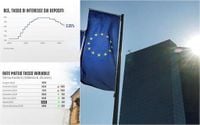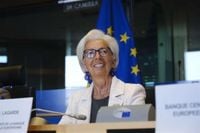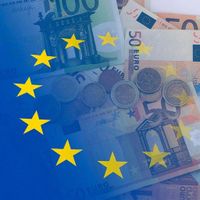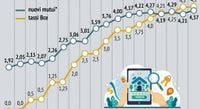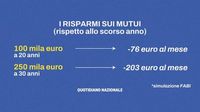The European Central Bank (ECB) has once again cut interest rates, marking the seventh consecutive reduction since June of last year. On April 17, 2025, the ECB announced a 25 basis point decrease, bringing the deposit rate down from 2.50% to 2.25%. This decision comes amid ongoing concerns about international trade tensions and a less alarming inflation outlook.
The cut in rates is expected to have significant implications for families across Europe, particularly in Italy. According to an analysis by Fabi (Federazione Autonoma Bancari Italiani), the average fixed mortgage rate could soon hover around 2.55%, a significant drop from the 4% rate seen about a year ago. This reduction is poised to ease the financial burden on households, especially for those with long-term mortgages.
Specifically, the ECB's adjustments include a decrease in the main refinancing operations rate from 2.65% to 2.40%, and a reduction in the marginal lending rate from 2.90% to 2.65%. These changes are aimed at stimulating economic activity by encouraging banks to lend more freely, thus making credit more accessible for consumers and businesses alike.
For homeowners, the impact of these rate cuts is profound. On a ten-year mortgage, monthly savings could range from €37 to €182, depending on the amount financed. For those with a 30-year mortgage, the monthly savings could exceed €200. For instance, on a €100,000 mortgage over 20 years, the monthly payment will decrease by €76, while for the same amount over 30 years, the reduction will be €81. A €250,000 mortgage over 30 years could see a monthly reduction of €203, translating to over €2,400 in savings annually.
Furthermore, for variable rate mortgages, estimates by Facile.it suggest that a €126,000 loan over 25 years could see monthly payments drop below €600, down from €752 in December 2023, although still higher than the €456 recorded in June 2022.
As for those who have yet to secure a mortgage, the gap between fixed and variable rates is narrowing. In April 2025, fixed rates are reported at 2.2%, while variable rates have risen to 2.6%, according to data from MutuiOnline.it.
The benefits of the ECB's rate cuts extend beyond the housing market. Fabi anticipates that the average interest rate for consumer credit could soon stabilize around 7.65%. This means that everyday purchases financed through loans will also become more affordable. For example, financing a €700 washing machine over five years would result in a monthly payment of €14, while a €1,200 television financed over three years would cost about €39 per month.
Despite these positive trends, there are concerns regarding the overall economic landscape. The ECB's decision to reduce rates comes in response to a backdrop of weak economic growth and persistent inflation challenges. The bank noted in its official statement that the Eurozone economy has shown resilience to recent global shocks, but ongoing trade tensions and rising geopolitical instability could undermine consumer and business confidence.
Moreover, while the ECB's actions are intended to foster economic growth, there are warnings about the potential long-term risks associated with prolonged low interest rates. An extended period of low borrowing costs could lead to excessive debt accumulation, posing risks to financial stability.
The ECB has emphasized that future decisions regarding interest rates will be made based on careful evaluation of available data, with no predetermined paths. Upcoming meetings of the ECB Governing Council are scheduled for June 5, July 27, September 11, October 30, and December 18 of this year, where further assessments will be made.
In summary, the ECB's latest interest rate cut is a strategic move aimed at stimulating the Eurozone economy while navigating the challenges of a complex global landscape. As families and businesses adjust to these changes, the potential for increased investment and consumer spending could pave the way for a more robust economic recovery.
